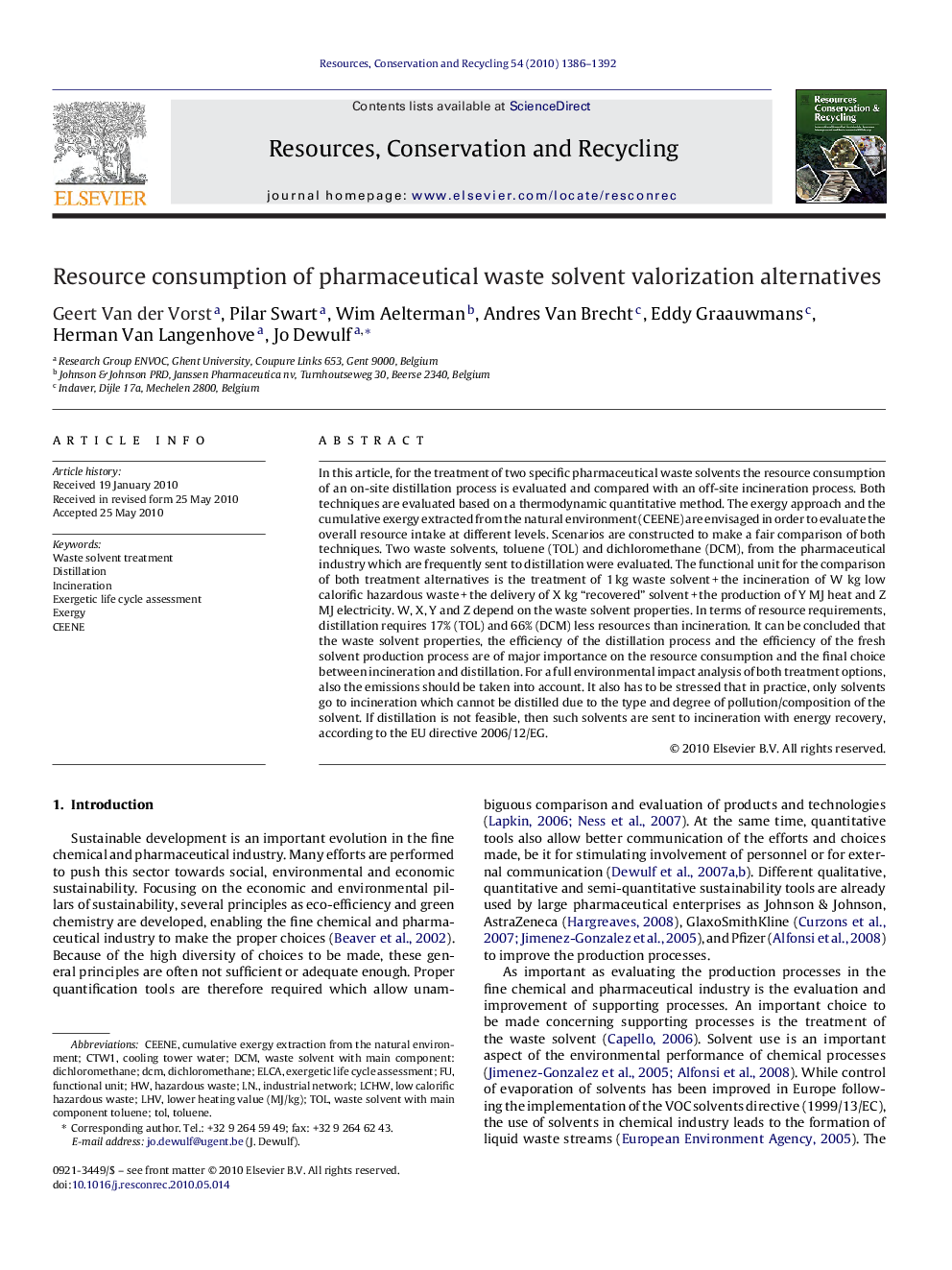| کد مقاله | کد نشریه | سال انتشار | مقاله انگلیسی | نسخه تمام متن |
|---|---|---|---|---|
| 1063828 | 948257 | 2010 | 7 صفحه PDF | دانلود رایگان |

In this article, for the treatment of two specific pharmaceutical waste solvents the resource consumption of an on-site distillation process is evaluated and compared with an off-site incineration process. Both techniques are evaluated based on a thermodynamic quantitative method. The exergy approach and the cumulative exergy extracted from the natural environment (CEENE) are envisaged in order to evaluate the overall resource intake at different levels. Scenarios are constructed to make a fair comparison of both techniques. Two waste solvents, toluene (TOL) and dichloromethane (DCM), from the pharmaceutical industry which are frequently sent to distillation were evaluated. The functional unit for the comparison of both treatment alternatives is the treatment of 1 kg waste solvent + the incineration of W kg low calorific hazardous waste + the delivery of X kg “recovered” solvent + the production of Y MJ heat and Z MJ electricity. W, X, Y and Z depend on the waste solvent properties. In terms of resource requirements, distillation requires 17% (TOL) and 66% (DCM) less resources than incineration. It can be concluded that the waste solvent properties, the efficiency of the distillation process and the efficiency of the fresh solvent production process are of major importance on the resource consumption and the final choice between incineration and distillation. For a full environmental impact analysis of both treatment options, also the emissions should be taken into account. It also has to be stressed that in practice, only solvents go to incineration which cannot be distilled due to the type and degree of pollution/composition of the solvent. If distillation is not feasible, then such solvents are sent to incineration with energy recovery, according to the EU directive 2006/12/EG.
Journal: Resources, Conservation and Recycling - Volume 54, Issue 12, October 2010, Pages 1386–1392